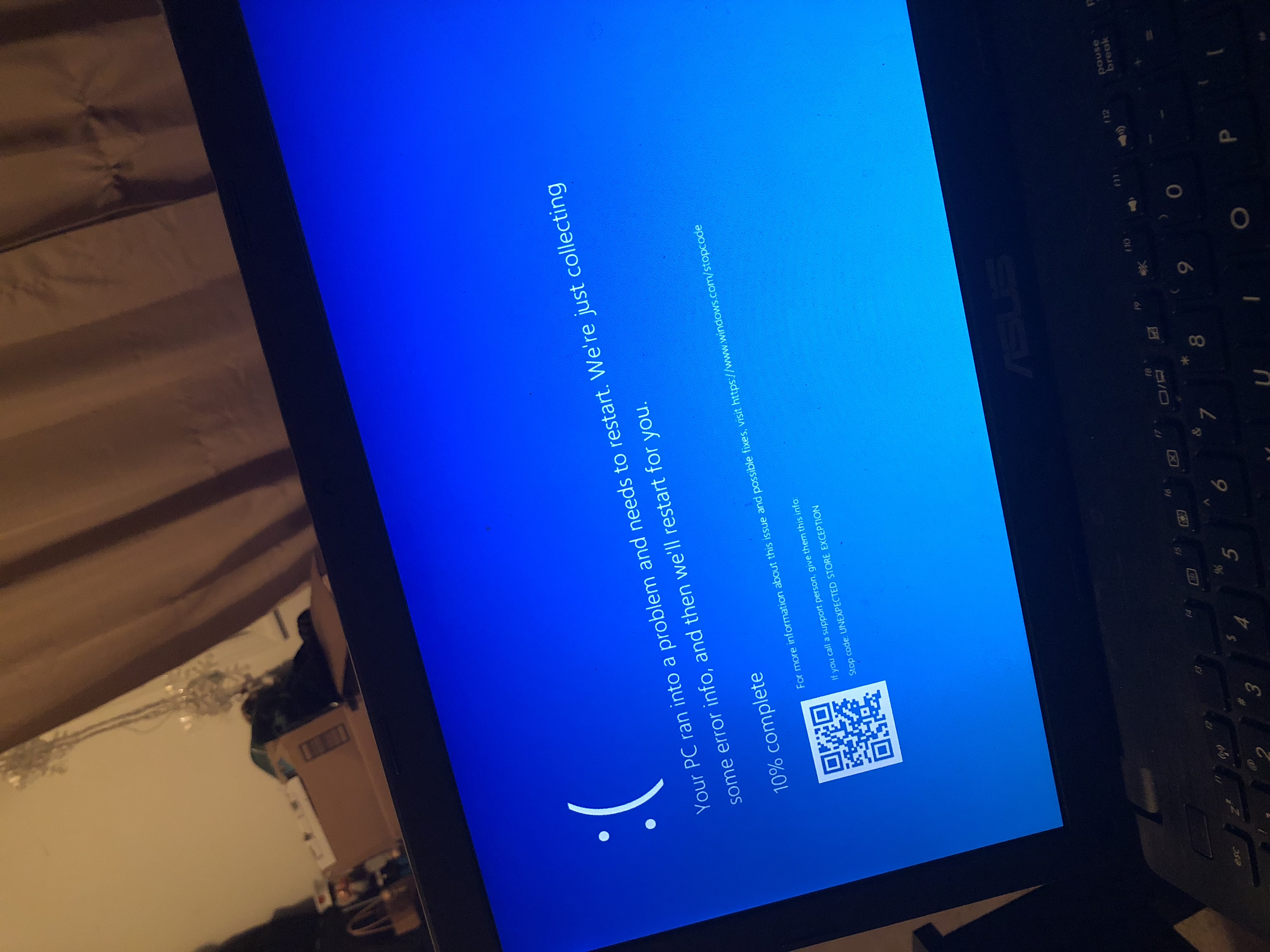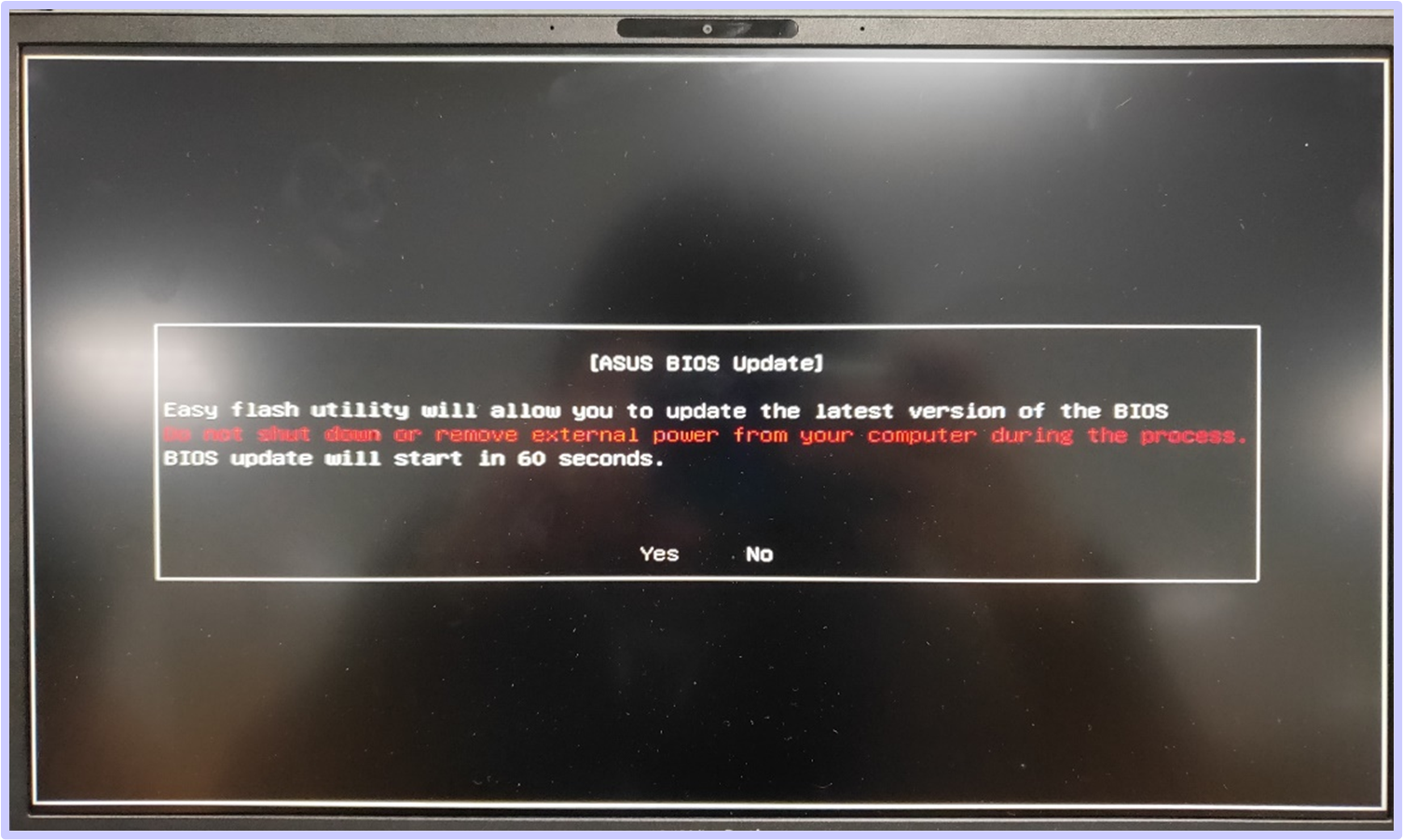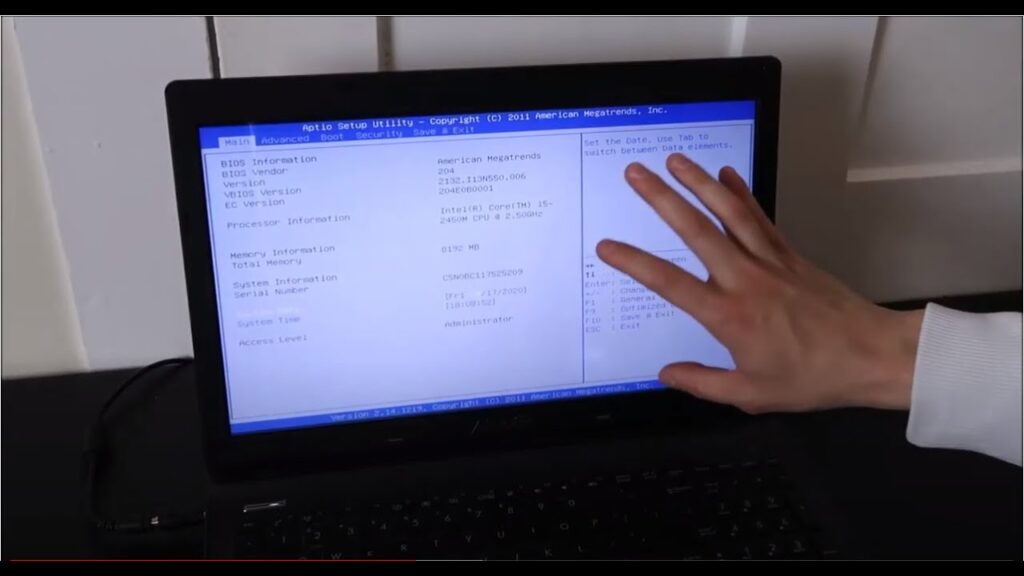Asus laptop startup issues can be resolved by performing a power cycle or checking for loose connections. Asus laptops are known for their reliability and high performance.
However, sometimes users may encounter startup issues that prevent them from using their laptops. These issues can be caused by a variety of factors, including hardware or software problems. Some common causes of Asus laptop startup issues include a dead battery, faulty power supply, loose connections, or corrupt system files.
Fortunately, many of these problems can be resolved by performing a power cycle or checking for loose connections. We will explore some of the most common Asus laptop startup issues and provide solutions to help you get your laptop up and running again.
Common Asus Laptop Startup Problems
Power Supply Issues
One of the most common Asus laptop startup problems is related to power supply issues. This can occur due to a faulty adapter or a damaged power cord. If the laptop fails to power on or keeps shutting down unexpectedly, it might be indicative of power supply issues.
Faulty Hardware Components
Another prevalent cause of startup issues in Asus laptops is faulty hardware components. This can include problems with the RAM, hard drive, or motherboard. If the laptop displays error messages or experiences frequent crashes during startup, it could be a sign of faulty hardware components.
Initial Troubleshooting Steps
To troubleshoot Asus laptop startup issues, start by checking power sources, restarting the laptop, and updating drivers. Ensure proper connections and run diagnostic tests to identify the root cause. If problems persist, seek technical support for further assistance in resolving the startup issues effectively.
Initial Troubleshooting Steps for Asus Laptop Startup Issues:
Asus laptops are known for their high-quality performance and durability, but sometimes they may encounter startup issues. These issues can be caused by various reasons such as software conflicts, hardware failure, or corrupted operating system files. In this post, we will discuss the initial troubleshooting steps that can be taken to resolve Asus laptop startup issues.
Performing a Hard Reset:
Performing a hard reset is one of the most basic troubleshooting steps that can be taken to resolve Asus laptop startup issues. Follow these simple steps to perform a hard reset:
1. Disconnect the power cable and remove the battery from your Asus laptop.
2. Press and hold the power button for 30 seconds.
3. Reinsert the battery and plug in the power cable.
4. Turn on your Asus laptop.
Accessing Safe Mode:
Safe Mode is a diagnostic mode in Windows that allows users to troubleshoot and fix various issues with their computer. Follow these simple steps to access Safe Mode on your Asus laptop:
1. Press and hold the Shift key while clicking on the Restart option in the Start menu.
2. Select Troubleshoot > Advanced options > Startup Settings > Restart.
3. Press the F4 key to boot into Safe Mode.
Conclusion:
By following these initial troubleshooting steps, you can resolve most Asus laptop startup issues. However, if the issue still persists, it is recommended to seek professional assistance.
Navigating Bios Setup Utility
When it comes to troubleshooting startup issues on your Asus laptop, one important aspect to consider is navigating the BIOS Setup Utility. This utility allows you to access and configure various settings related to your computer’s hardware, including the boot order and firmware updates. In this section, we will explore two essential steps: checking the boot order and updating the BIOS firmware.
Checking Boot Order
One common cause of startup issues is an incorrect boot order. The boot order determines the sequence in which your computer searches for an operating system to load. If the boot order is not set correctly, your laptop may try to boot from a device without an operating system, such as a USB drive or a DVD. To check and modify the boot order, follow these steps:
- Start by powering on your Asus laptop and immediately press the Del or F2 key repeatedly until you enter the BIOS Setup Utility. The specific key may vary depending on your laptop model.
- Once inside the BIOS Setup Utility, navigate to the Boot or Boot Order section using the arrow keys on your keyboard.
- Look for a list of devices under the boot order. The device at the top of the list is the first one your laptop will attempt to boot from. Ensure that your laptop’s internal hard drive or SSD is listed as the first device.
- If the boot order is incorrect, select the device you want to move using the arrow keys and press the + or – key to change its position in the list.
- Once you have adjusted the boot order, save the changes by pressing the F10 key and confirm by selecting Yes or Save and Exit.
Updating Bios Firmware
Another potential solution to startup issues is updating the BIOS firmware. BIOS updates often include bug fixes, performance improvements, and compatibility enhancements. To update the BIOS firmware on your Asus laptop, follow these steps:
- Visit the official Asus support website and navigate to the Drivers & Tools section.
- Enter your laptop’s model name or serial number to find the correct drivers and firmware updates.
- Locate the latest BIOS firmware update for your specific laptop model and download it to your computer.
- Extract the downloaded file and locate the BIOS firmware update file with a
.CAPor.ROMextension. - Copy the BIOS firmware update file to a USB drive formatted in FAT32.
- Insert the USB drive into your Asus laptop.
- Restart your laptop and enter the BIOS Setup Utility by pressing the Del or F2 key.
- Navigate to the Tool or Advanced section and select the ASUS EZ Flash Utility.
- Follow the on-screen instructions to select the BIOS firmware update file from the USB drive and initiate the update process.
- Once the update is complete, restart your laptop and check if the startup issues have been resolved.
By following these steps to check the boot order and update the BIOS firmware, you can effectively troubleshoot and resolve startup issues on your Asus laptop. Remember to save any changes made in the BIOS Setup Utility and exercise caution when updating the BIOS firmware to avoid any potential complications.

Credit: answers.microsoft.com
Software-related Fixes
If you are experiencing startup issues with your Asus laptop, there is a good chance that the problem lies within the software. Fortunately, there are several steps you can take to resolve these software-related issues and get your laptop up and running smoothly again. In this section, we will discuss two common software-related fixes: repairing Windows startup and removing malware and viruses.
Repairing Windows Startup
If your Asus laptop is having trouble starting up, it could be due to a problem with the Windows operating system. Here are a few steps you can take to repair the Windows startup:
- Check for system errors: Use the built-in Windows System File Checker tool to scan for any corrupt system files. To do this, open the Command Prompt as an administrator and type in the command “
sfc /scannow“. This will check for and repair any corrupted files that may be causing startup issues. - Perform a startup repair: If the system file checker doesn’t solve the issue, you can try the Windows startup repair tool. To access this tool, boot your Asus laptop using a Windows installation media and select the “Repair your computer” option. From there, follow the on-screen instructions to perform a startup repair.
- Restore to a previous working state: If the startup repair doesn’t fix the problem, you can try restoring your laptop to a previous working state using the System Restore feature. To do this, boot your laptop into the Advanced Startup Options and select “System Restore”. Choose a restore point from before the startup issues began and let the system restore process complete.
Removing Malware And Viruses
Malware and viruses can also cause startup issues on your Asus laptop. To ensure your laptop is free from any malicious software, follow these steps:
- Update and run antivirus software: Make sure your antivirus software is up to date and perform a full system scan. This will help identify and remove any malware or viruses that may be affecting your laptop’s startup.
- Use anti-malware tools: Consider using reputable anti-malware tools, such as Malwarebytes or Spybot, to perform an additional scan. These tools can often detect and remove malware that may have been missed by your antivirus software.
- Remove suspicious applications: Uninstall any suspicious or unfamiliar applications from your laptop. These could be potential sources of malware or viruses. To do this, go to the Control Panel, select “Uninstall a program”, and remove any applications that you do not recognize or trust.
By following these software-related fixes, you should be able to troubleshoot and resolve startup issues with your Asus laptop. Remember to regularly update your software and perform scans to prevent future problems. However, if the issues persist, it is recommended to seek professional assistance.
Hardware Checks And Solutions
When it comes to troubleshooting Asus laptop startup issues, hardware checks and solutions play a crucial role in diagnosing and resolving the underlying problems. By conducting thorough hardware checks, you can identify and address issues related to the laptop’s components, ensuring smooth and efficient startup performance.
Testing RAM and Hard Drive
To begin with, testing the RAM and hard drive is essential in diagnosing potential startup issues. Start by checking the RAM for any signs of damage or malfunction. If the RAM is removable, consider reseating it or using a different slot. Additionally, running a diagnostic test using software such as Memtest86 can help identify any memory-related issues.
Next, inspect the hard drive for any signs of physical damage or corruption. Use built-in Windows tools such as CHKDSK to scan and repair any errors on the hard drive. Furthermore, consider using third-party software like CrystalDiskInfo to assess the health and performance of the hard drive.
Replacing Faulty Components
If hardware checks reveal faulty components, it’s crucial to replace them to ensure optimal startup performance. Whether it’s a malfunctioning RAM module or a failing hard drive, replacing the faulty components can significantly improve the laptop’s startup reliability. When replacing components, ensure compatibility with the laptop model and seek professional assistance if needed.

Credit: www.asus.com
When To Seek Professional Help
Service Center Support
If you encounter persistent startup issues with your Asus laptop, seeking professional help from the authorized service center can provide a solution. The trained technicians at the service center have the expertise and specialized tools to diagnose and resolve complex hardware and software problems.
Warranty And Repairs
Under the warranty terms, Asus offers repair services for laptops experiencing startup issues. Prior to seeking professional help, ensure that your device is within the warranty period. Warranty coverage may vary depending on the specific issue, so it’s important to review the terms and conditions to determine eligibility for repair services.

Credit: www.youtube.com
Frequently Asked Questions
Why Is My Asus Laptop Not Starting Up?
If your Asus laptop is not starting up, it could be due to a variety of reasons such as a drained battery, faulty power adapter, or hardware issues.
How Can I Fix Startup Issues On My Asus Laptop?
To fix startup issues on your Asus laptop, try troubleshooting steps like checking the power source, resetting the laptop, or updating the BIOS. If the problem persists, consider seeking professional assistance.
What Should I Do If My Asus Laptop Keeps Restarting During Startup?
If your Asus laptop keeps restarting during startup, try booting in safe mode, running a virus scan, or performing a system restore to a previous working state. If the issue continues, consult a technician for further diagnosis.
Why Is My Asus Laptop Stuck On The Loading Screen?
If your Asus laptop is stuck on the loading screen, it could be caused by software conflicts, corrupted files, or insufficient system resources. Try booting into safe mode, disabling unnecessary startup programs, or running a disk cleanup to resolve the issue.
Conclusion
Facing startup issues on your Asus laptop can be frustrating. By following troubleshooting steps and seeking professional help, you can resolve these issues effectively. Remember to regularly update your software and maintain your device for optimal performance. Don’t let startup problems slow you down; address them promptly for a smooth user experience.


